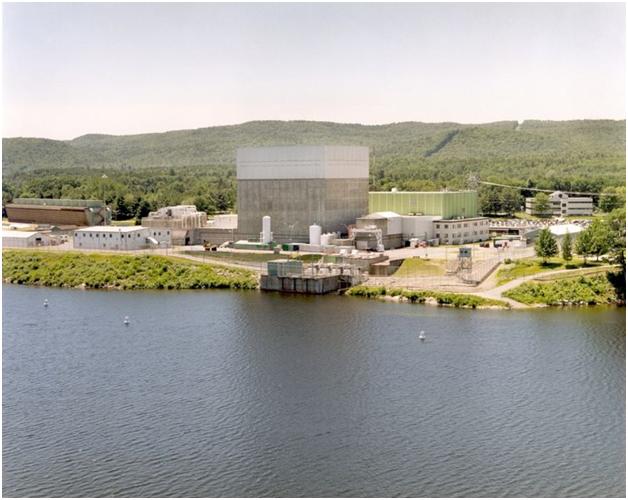The Donald C. Cook Nuclear Generating Station is located eleven miles north of St. Joseph, Michigan on the southeast shore of Lake Michigan. The plant contains two 1000 megawatt Westinghouse four loop pressurized water nuclear reactors. The Unit 1 reactor was put into operation in 1974 and was licensed until 2014. The Unit 2 reactor was put into operation in 1977 and was licensed until 2017. In 2005, both reactors were granted extended licenses, 2034 for Unit 1 and 2037 for Unit 2. The plant is owned by American Electric Power and operated by a subsidiary, Indiana Michigan Power.
The population in the NRC plume exposure pathway zone with a radius of ten miles around the plant contains about fifty five thousand people. The NRC ingestion pathway zone with a radius of fifty miles around the plant contains about one million two hundred thousand people. The NRC estimates that there is a low risk of an earthquake that could damage the plant.
In 1976, argon gas in a recirculation pit asphyxiated two workers. In 1979, one thousand gallons of radioactive coolant were sprayed over upper levels of the containment building. In 1990, the explosion of switchgear severely burned four people, killing one.
In 1997, an NRC inspection questioned whether the plant was designed to be able to withstand a variety of possible accidents including earthquakes, explosions, fires, flood and tornados. The operators dealt with the specific problems that the NRC identified by early 1998 and preparations were made for a restart. The Union of Concerned Scientists pointed out that some identifiable problems at the plant had not been remedied, some of which concerned the ice condenser containment equipment. Problems of ice condensers had been identified at other nuclear reactor plants but the NRC took no actions on those warnings until the complaint of the UCS. Further inspection by the NRC confirmed that there were twenty nine violations of federal requirements at the plant. The plant operators proceeded to work on the identified problems and eventually reported back that over two hundred material conditions and seventy design problems had been fixed. Both Units were out of service for about three years while the work was done. In addition to the physical repairs and changes at the plant, there were changes in management.
In 2003, a problem with a transformer triggered an automatic shutdown in Unit 1. Also in 2003, a huge number of fish entered the cooling intake and caused both units to be shut down for a day. In 2008, the main turbine and generator in Unit 1 was damaged by broken turbine blades. There was also a fire in the generator of Unit 1 that same year.
The main problems at this plant stemmed from poor design at the plant and poor oversight on the part of the NRC. If the Union of Concerned Scientists had not intervened, the reactors at the plant would have been restarted while serious design problems were still present. In addition, we see that the behavior of fish in the lake providing cooling water forced the plant to shut down. Nuclear power is hyped as being a constant and reliable source of power in contrast to renewable energy such as wind and solar. Being shut down for three years for repairs is not my definition of reliable.
Photo from David Wayne Prins:

